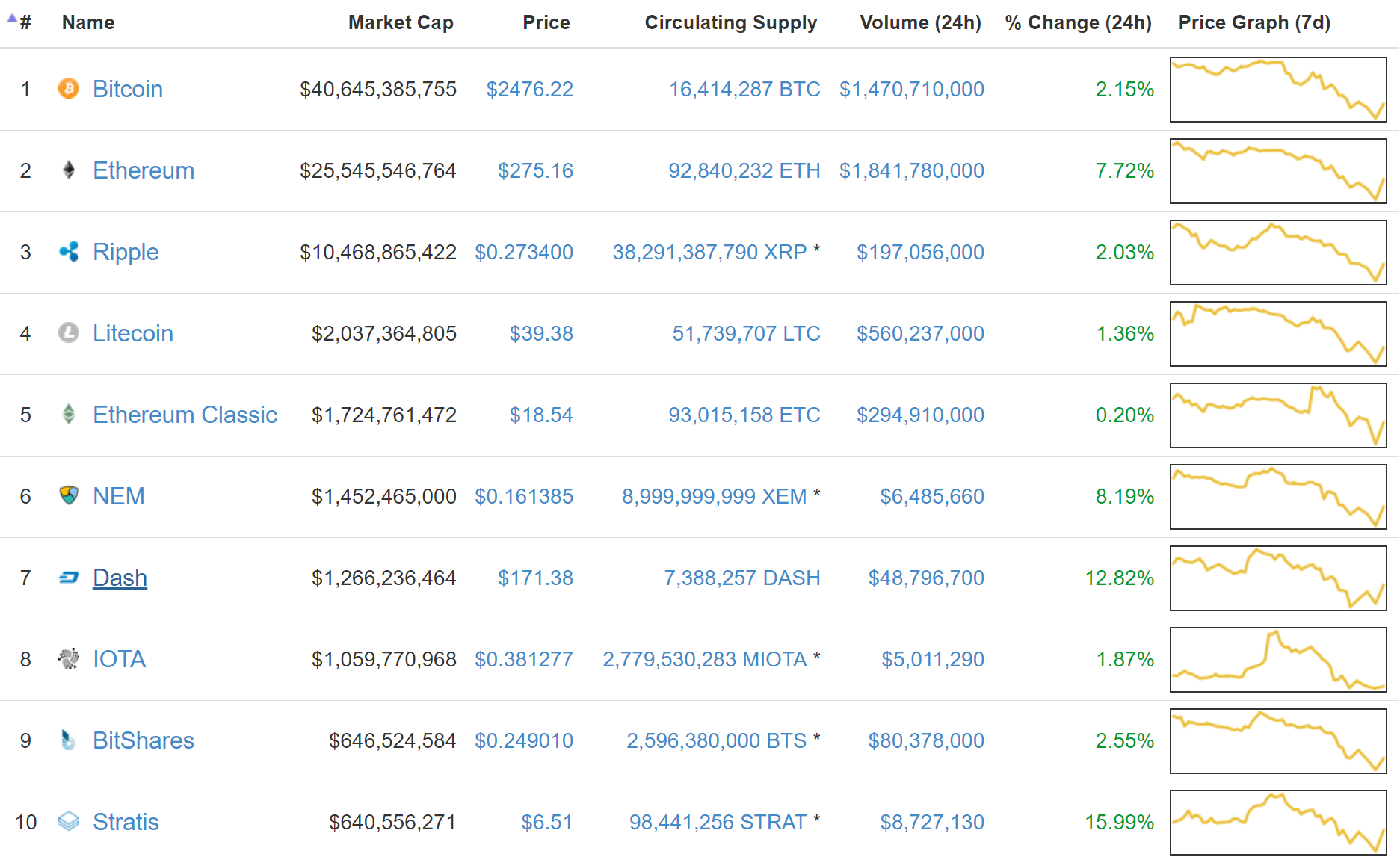Factors Pushing Bitcoin Prices
Higher in 2017
For newcomers to the market looking to make a quick win, the rollercoaster of a year has probably been a time of scratching heads and possibly a few tears shed. For the long-term investor, however, these periods are part of the journey and opportune times to snap up some more coins when the price takes a dip. Despite the precautionary cries of ‘bursting bubbles’, these market corrections are an anticipated occurrence.

Legislative Changes for Cryptos
Earlier this year, Japan announced that as of 1 April 2017, the country would recognise bitcoin as legal tender and make the provisions for administrative and accounting systems to be enhanced for cryptocurrency transactions to take place seamlessly. This was undoubtedly the major contributing factor to an initial surge in the price as Japanese individuals and corporations alike scrambled on exchanges to secure bitcoin for future purchases. Hundreds of thousands of retailers in the area are said to be equipping themselves to accept bitcoin payments, with a low cost airline, Peach, becoming the first commercial carrier to directly offer consumers tickets paid in bitcoin.
Australia quickly followed suit, announcing accelerated amendments to legislation that eliminated the incumbent double taxation on digital currency transactions. As it stands, Australians using bitcoin for transactions are liable for the 10% goods and services tax (GST) plus a further 10% tax for using ‘intangible property’ as a payment medium. Come 1 July 2017, these transactions will only attract GST, and be exempt from further taxation, no doubt fuelling a greater adoption of digital currency transactions. The proactive progression by these countries certainly paves the way for others to learn from their integration and regulatory practices, empowering mainstream bitcoin adoption, which naturally pushes the price higher as demand increases.
Scaling Debate Resolution
The scaling debate has been a long-standing hurdle for Bitcoin growth. The decentralised nature of bitcoin, which naturally is one of its most appealing qualities, presents some challenges when it comes to governance of remedial action. In an ecosystem where no single entity can dictate changes to the framework, a majority consensus must be reached. The fact remains that Bitcoin needs to scale from its current transactional capacity in order to meet the demands placed on the network in terms of the growing number of transactions, as the current block size is impeding quick and cost-effective transactions.
Whilst several proposals have been put forward, the Bitcoin community have yet to come to agreement on a viable solution that satisfies the majority, while at the same time doing what is best for the wider user base. In May 2017, at the annual Consensus conference, held in New York, an agreement has been signed by a ‘critical mass of the bitcoin ecosystem’ that set out a plan for the adoption of SegWit with a planned hard fork to a 2MB blocksize within six months. While further clarity is needed, it would appear that we may finally come to a point of breaking the stalemate, which will contributing factor in Bitcoin being able to advance and reach its full potential.
Economic and Political Uncertainty
One of Bitcoin’s undeniable drivers of growth are citizens who have lost confidence in their country’s ability to maintain sound economic and political policies, and desperately seek to establish their own sense of financial freedom outside the manipulation of governments.
Venezuela
Take Venezuela for example. An overly aggressive expansionary monetary policy has resulted in hyperinflation, which the International Monetary Fund (IMF) expects to reach an explosive 1,660% this year. This has led to an unparalleled economic and social crisis. The removal of the 100 Bolivar note (the largest denomination and still worth only a few US cents) from circulation in December 2016 alongside the lack of availability of the planned 500 to 20,000 Bolivar notes, led to widespread chaos and violent protests amongst Venezuelans, who for the most part were heavily reliant on cash but were effectively left without money for weeks on end.
It is reported that the minimum wage is around 200,000 Bolivars, yet a single basket of groceries costs in the region of 770,000 Bolivars, nearly 4 times the minimum monthly wage. Whilst the government provide some subsidised basic goods, the ‘outlets’ have become hotspots for vicious crime and citizens have to weigh up the risks of cheaper food against the dangers that face them in the queues. This is what happens when people reach such levels of despair to survive. The alarming surge in crimes such as kidnapping and murder leave most Venezuelans living in fear for their lives on a daily basis, with little in the way of respite.
India
India is another prime example, where the most recent, and possibly most extreme case of a modern-day war on cash occurred in December 2016. Under the pretence of curbing criminal action and tax evasion, Prime Minister Narendra Modi effectively wiped out 86% of notes in circulation overnight, when he announced the demonetisation of 500 and 1,000 Rupee notes with immediate effect. Exchange was possible, but within a limited time frame and only up to a certain amount, the rest having to be processed via a bank account. This, in a country where almost half its population has no access to formal banking, let alone a bank account. This is just one of the reasons bitcoin holds such appeal in tempestuous economic climates. With Bitcoin, you are assured a level of financial security your money is removed from the coercion of the centralised system, therefore protecting your wealth from political agendas, damaging inflation and capital controls.
Increased Inflow of Institutional Money
Financial institutions, who are historically wary about Bitcoin are increasingly showing signs of interest in the digital asset. When compared to the performance of stock markets and fiat currencies, combined with more and more regulatory structure coming into place, it is unsurprising that institutional money has started flow into the crypto-economy. Regulation is arguably one of the largest barriers to cryptocurrency investment for institutions. Two nations, in particular, have been influential in this regard; Sweden and Japan. Sweden was one of the first movers in terms of a regulated Bitcoin investment. Back in May 2015, the KnC Group launched the world’s first ‘Bitcoin Tracker’ known as an exchange-traded note (ETN), which is publicly traded on a regulated exchange. This represented massive progress for Bitcoin at the time and essentially opened the market for institutions and private individuals to gain a regulated exposure to Bitcoin.
The ETN is designed to mirror the price movements of the underlying asset being USD/BTC. The company offering the ETN, XBT Provider, is required to hold the equivalent number of bitcoins as the number of ETN’s issued. In other words, when a financial institution or private investor purchases, XBT Provider has to purchase the same amount of bitcoins to back up the note. Earlier this month, Hargreaves Lansdown, the UK’s largest brokerage, announced that their clients would be able to access the ETN via their SIPP and brokerage accounts. This has opened the doors for retail and institutional investors to gain a regulated Bitcoin exposure in the UK.
As mentioned earlier, Japan has played a crucial role in moving bitcoin into the mainstream. This move has provided institutional players with the much-needed vote of confidence required before they got on board. Russia and India are looking likely to be the next countries to announce positive legislation after an increase in interest within the regions. This will further stimulate institutional investment into Bitcoin, leading to a stronger and more prosperous market for all.
Mainstream Momentum
Perhaps this can be linked back to the fact that with growing interest, and impressive growth, the media have been covering Bitcoin more and more frequently, exposing it to a wider audience. Personally, I have had more and more dinner table discussions about Bitcoin with friends, family, ex-colleagues and acquaintances, outside of the ‘cryptocurrency world’, all now showing interest in Bitcoin.
It was this month that the Wall Street Journal mentioned Bitcoin on its front page, highlighting that Bitcoin has had a strong 2017. This mainstream recognition for Bitcoin’s performance has been long awaited and will be a stimulus for continual momentum. It was only 2 years ago that most of the mainstream news stations were reporting Bitcoin’s demise. What a turn of events it has been. The factors I have outlined above are merely a few of the positive fundamentals Bitcoin has going for it. Driving demand, expanding its utility and subsequently, increasing its value and price. So yes, I am confident when I say that Bitcoin will continue to break through all time highs and find favour above the $3,000 mark before the bells ring in 2018.
Chuck Reynolds

Marketing Dept
Contributor
Please click either Link to Learn more about -Bitcoin.
Alan Zibluk – Markethive Founding Member












